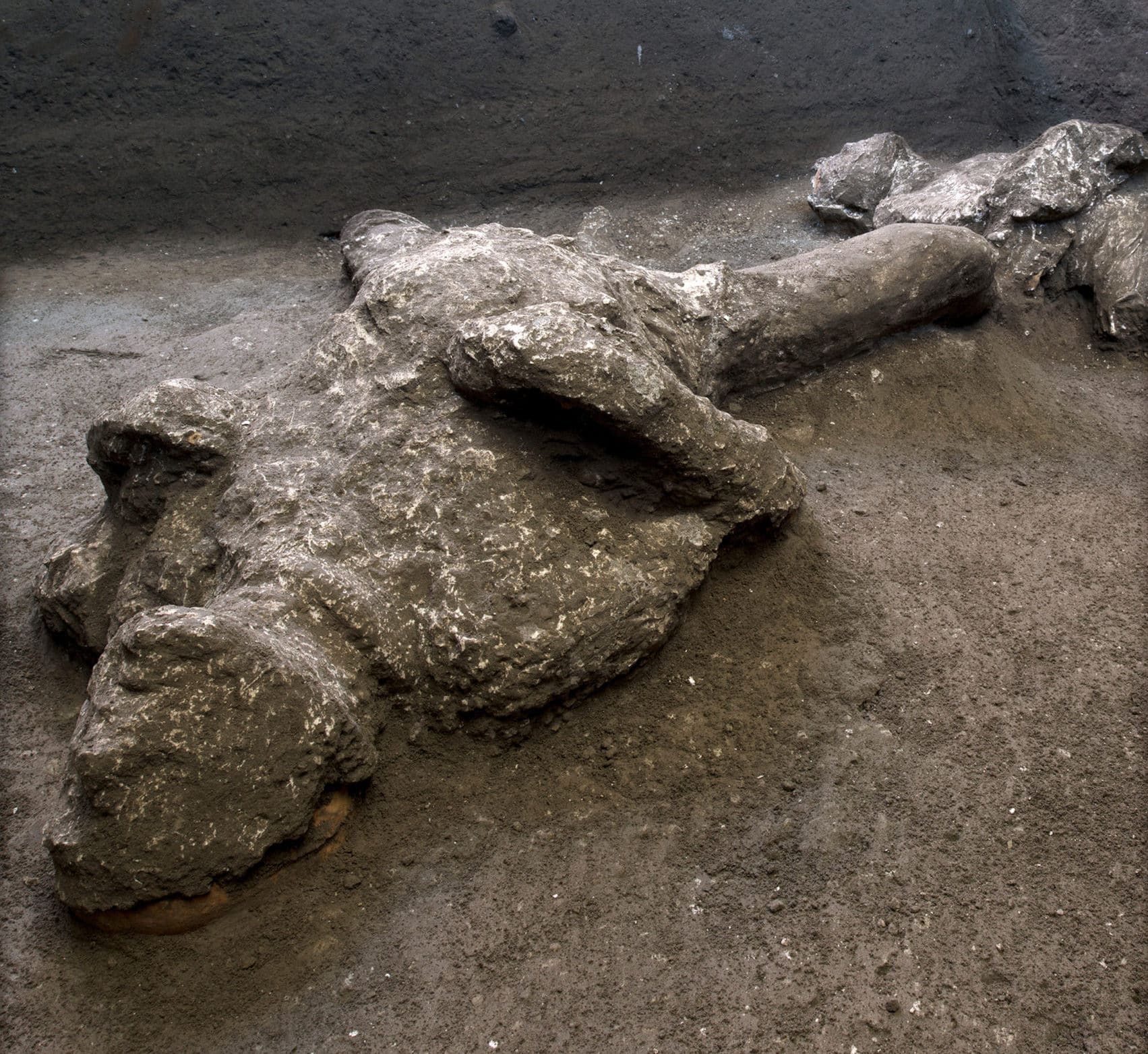Two charred men: Ancient remains unearthed at Pompeii
Sun 22 Nov 2020
Archaeologists have discovered the exceptionally well-preserved remains of two men scalded to death by the volcanic eruption that destroyed the ancient Roman city of Pompeii in 79 AD, the Italian culture ministry said on Saturday.
One was probably a man of high status, aged between 30 and 40, who still bore traces of a woollen cloak under his neck.
The second, probably aged 18 to 23, was dressed in a tunic and had a number of crushed vertebrae, indicating that he had been a slave who did heavy labour.
The remains were found in Civita Giuliana, 700 metres northwest of the centre of ancient Pompeii, in an underground chamber in the area of a large villa being excavated.
What the writer Luigi Settembrini defined as “the pain of death that takes on body and form” once again takes shape in #Pompeii, in the form of men who lost their lives during the eruption, the traces of whose death throes have remained imprinted in the ash for 2000 years. pic.twitter.com/SKXG5AM8Iq
— Pompeii Sites (@pompeii_sites) November 21, 2020
The men’s teeth and bones were preserved, and the voids left by their soft tissues were filled with plaster that was left to harden and then excavated to show the outline of their bodies.
“These two victims were perhaps seeking refuge when they were swept away by the pyroclastic current at about 9 in the morning,” said Massimo Osanna, director of the archeological site. “It is a death by thermal shock, as also demonstrated by their clenched feet and hands.”
In a statement, Culture Minister Dario Franceschini said the find underlined Pompeii’s status as “an incredible place for research and study”.
Pompeii, 23 km (14 miles) southeast of Naples, was home to about 13,000 people when the eruption buried it under under ash, pumice pebbles and dust, freezing it in time.
The remains were not discovered until the 16th century and organised excavations began around 1750. However, more recently, attention has focused on arresting the decay or collapse of the exposed ruins.
[Sourced from Agencies]

 Apr 18 2024
Apr 18 2024













